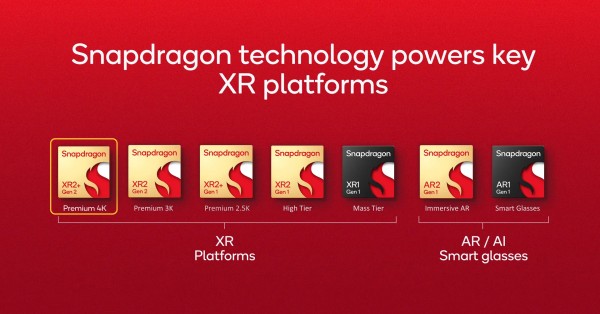Valenciaport’s Leap into 5G: A Smart Port Revolution
Valenciaport, Spain’s Port of Valencia, is leading the way in digital transformation with its private 5G network. This project is set to connect over 25,000 devices, including phones, tablets, drones, cameras, vehicles, and sensors, making it one of the largest 5G private network implementations in Europe. Operating on the n40 spectrum (2.3-2.4 GHz) with 20 MHz of bandwidth, the network is a game-changer for managing cargo traffic, improving security, and enhancing efficiency at Europe’s second-busiest port.
Connectivity Challenges at Valenciaport
Ports worldwide face increasing pressure to modernize their infrastructure and meet the growing demands of global trade. Valenciaport, which handles 77 million tonnes of cargo and 4.8 million TEUs (twenty-foot equivalent units) annually, required a connectivity solution capable of managing real-time communication across its six-square-mile site. Legacy systems relying on external operators often lack the scalability, security, and responsiveness needed for IoT-heavy operations.
Additionally, ensuring network privacy in an environment with diverse data streams—such as environmental monitoring, logistics, and surveillance—presents unique challenges. Overcoming these issues is essential for the port’s transformation into a fully operational Smart Port.
How Valenciaport’s Private 5G Network Solves Connectivity Problems
To overcome these challenges, Valenciaport has chosen a private 5G Stand-Alone (SA) network, allowing full control over infrastructure and operations. The project is funded partially by the European Union’s Connecting Europe Facility (CEF) and managed entirely by the Port Authority of València (PAV). Key features of the network include:
- Standalone Architecture: Fully private core network with geo-redundancy to prevent outages.
- Comprehensive Coverage: Over 15 5G RAN base stations provide coverage for six square miles.
- High Performance: Supports up to 10 Gbps throughput and 25,000 devices.
- Scalable Spectrum: Currently utilizing 20 MHz of bandwidth, expandable to 40 MHz.
- Cybersecurity: A dedicated high-availability system for enhanced network security.
This in-house deployment ensures independence from mobile operators, giving PAV the flexibility to manage upgrades, add features, and align the infrastructure with its operational needs.
Early Applications of Valenciaport’s 5G Network
Valenciaport has identified two critical use cases to test its 5G network:
1. Police Surveillance
Enhanced mobile broadband connectivity will support high-resolution cameras installed in police vehicles, personnel equipment, and handheld devices. This setup will allow real-time recording and broadcasting of surveillance footage, improving perimeter and internal security. By strengthening its monitoring capabilities, Valenciaport aims to reduce incidents and respond to threats swiftly.
2. Remote Maintenance
Valenciaport plans to deploy immersive telepresence systems supported by Artificial Intelligence (AI) infrastructure within the 5G network’s core. This system will enable technicians to perform remote maintenance with real-time expert guidance, eliminating the need for physical travel. These solutions also open the door to AR/VR applications, boosting efficiency and reducing operational costs.
Innovative 5G Applications for the Smart Port of Tomorrow
The private 5G network will support a range of innovative applications in the coming years, including:
- Digital Twinning: Real-time simulation of port operations for predictive maintenance and optimization.
- Stowage Planning: Automated processes to streamline cargo handling.
- Collision Risk Detection: Enhancing safety for vehicles and workers.
- Passenger Connectivity: High-speed internet access for cruise and ferry passengers.
These use cases will transform Valenciaport into a fully operational Smart Port, leveraging IoT and data analytics to improve efficiency and reduce environmental impact.
Top Benefits of Valenciaport’s Private 5G Network
The deployment offers numerous advantages:
- Operational Control: Full autonomy over network decisions and upgrades.
- Enhanced Security: A dedicated private spectrum ensures data integrity.
- Efficiency Gains: Real-time connectivity streamlines operations and reduces downtime.
- Scalability: Supports thousands of connected devices and is future-proof for new technologies.
These benefits make Valenciaport a model for other ports exploring 5G private networks.
The Role of Private 5G Networks in Europe’s Industrial Evolution
Valenciaport’s initiative reflects a growing trend among European enterprises to utilize private 4G/5G networks for industrial IoT projects. Spain, France, and Finland are allocating spectrum in 20 MHz blocks in the n40 band, while other EU nations favor larger allocations in the n78 band. The EU aims to standardize enterprise spectrum use, further facilitating 5G adoption across industries.
How Valenciaport Is Leading 5G Innovation in Ports
Valenciaport’s approach to its 5G private network sets it apart as a leader in digital transformation within the maritime industry. The Port Authority of València (PAV) has taken a proactive role as the sole manager of the project, overseeing every aspect of the deployment—from network design to implementation and long-term upgrades. This hands-on strategy ensures the infrastructure is fully aligned with the port’s strategic goals and operational priorities.
By developing and managing the network in-house, PAV has eliminated dependence on third-party operators. This independence is critical in allowing the port to maintain full control over key decisions, including network configurations, security protocols, and scalability. Unlike off-the-shelf solutions, the bespoke 5G Stand-Alone (SA) network is tailored to meet the unique demands of Valenciaport, including connecting over 25,000 devices and enabling advanced use cases like IoT, AI , and AR/VR applications.
This self-managed model also provides the flexibility to adapt to future needs. For example, the network’s use of the n40 spectrum band ensures privacy and security, while its current 20 MHz bandwidth can be expanded to 40 MHz to accommodate growing data demands. Furthermore, PAV’s direct control allows the network to evolve seamlessly with new technologies and market shifts, without the constraints or misaligned priorities often associated with third-party providers.
Valenciaport’s commitment to innovation extends beyond its technological deployment. The network is designed to address the specific challenges of a modern port, such as real-time surveillance, remote maintenance, and digital twinning, ensuring that its operations remain efficient, secure, and forward-looking. By leading its own 5G deployment, Valenciaport is not only redefining its own capabilities but also setting a standard for other ports and industries to follow.
Collaboration Driving Valenciaport’s 5G Success
Valenciaport’s private 5G network is supported by a collaborative ecosystem of partners. Suppliers, potentially including Nokia or Telefónica, bring their expertise in network equipment and integration services to ensure the successful deployment of advanced 5G technologies. These contributions are pivotal in delivering the high-performance infrastructure needed to meet the port’s operational demands.
Additionally, the European Union’s Connecting Europe Facility (CEF) provides critical financial backing, underscoring the strategic importance of this project in enhancing Europe’s digital infrastructure. Together, these partnerships align technical innovation and funding support to enable Valenciaport’s ambitious transformation into a Smart Port. At the same time, the Port Authority maintains overall control of the network’s evolution, ensuring that the solution is fully tailored to its unique needs and future vision.
Valenciaport’s 5G Deployment: Current Progress and Future Plans
The deployment is currently in its early stages, with initial testing focusing on police surveillance and remote maintenance use cases. Full implementation, including advanced applications like digital twins and collision detection, is expected by 2027. Valenciaport’s ongoing efforts to enhance user experience and operational efficiency underscore its commitment to becoming a model Smart Port for the future.
The Future of Smart Ports: Insights from Valenciaport’s 5G Network
Valenciaport’s private 5G network demonstrates the potential of dedicated connectivity solutions for industrial applications. By prioritizing autonomy, scalability, and security, the Port of Valencia is setting a benchmark for the Smart Port of the future. This initiative highlights how 5G private networks can revolutionize operations, offering valuable insights for other ports and industries globally.































